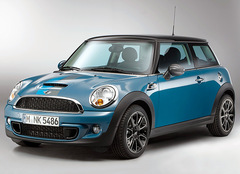
Anyone who's ever read Consumer Reports car buying advice knows that it's important to go into a showroom ready to fend off pitches for extras you don't need, like extended warranties, pin striping, and paint protection. But unless you're paying attention, you may end up paying extra just for the paint.
Many carmakers charge extra for certain colors, and that can add anywhere from $200 to a few thousand dollars toward the cost of a new car. Metal flake and tri-coat pearl finishes that are more complicated to produce and apply are generally the culprits, and some manufacturers charge more than others. But if you're buying a BMW or Mercedes-Benz, chances are you're going to pay extra if you want any color other than white or black.
If you're buying a new BMW 528i, for example, you can take your pick of 18 different colors. But if you were thinking of something with true color, prices start at $550 and go up to $1,800.
And it's not just luxury models that charge for colors. If you'd like a red Chevrolet Malibu or Ford Fusion, you're going to have to pony up another $325 or $395, respectively. And if you'd prefer that Fusion in White Platinum, that'll be $595, please. Chevrolet offers a similar shade for the Malibu, called White Diamond Tricoat. There's no word on whether actual diamonds are used in the manufacturing process, but you'd have to wonder since it costs an extra $995.
A base Mini Cooper coupe can be had in your choice of three colors for around $20,500, including destination charges. If none of the three do it for you, no problem. Eleven other hues are available, ranging in price from $500 to $2,750. Mini drivers feeling particularly self-expressive can really take it to the street with racing stripes, contrasting roof colors, and various colors and patterns for the dashboard and doors. Some of those won't cost you an extra dime, but choose carefully. The Bayswater hood stripes, for example, are listed as a no-cost option, but they require the addition of the Bayswater Package for a cool $3,250.
Even economical models like the Chevrolet Spark get into the game, charging as much as $325 for certain colors. A Mazda3 hatchback can be had in any of six different shades for no extra charge, but if you've got your heart set on Crystal White Pearl Mica, it's going to cost you $200.
In all, we looked at every combination of model and color available from all carmakers for the 2013 model year, which works out to about 390 models and more than 24,000 combinations. Of those, nearly 5,300 combinations of make, model, and color carried some extra charge, averaging about $700.
Keep in mind that your special color may cost you even after the last car payment is made. As a rule of thumb, says Eddie Lupinek of Eddie's Auto Body in Colchester, CT, expect paint that costs more originally to be more expensive to repair should you ever need bodywork or just want to touch up a few door dings. Red and yellow finishes cost more to make and to buy, he says, and those tri-color whites that look so luminescent in showrooms require a three-stage process to repair, with each stage a perfect match. "They have wonderful showroom appeal," says Eddie, "but they're a pain in the neck to repair."
Don't get us wrong. We've got nothing against self-expression, and there's nothing wrong with spending a little extra to make your car stand out. And a few hundred dollars spread over the cost of a loan or lease term won't make much of a difference in your monthly payment.
But like any other buying decision, it's important to go in with your eyes open, and pay attention especially if you're buying from dealer stock. That shade of red that looks so good sitting on the lot may not be so appealing if it costs $1,000 more than the silver one sitting next to it. And the extra cost is not likely to come back at trade-in time.





